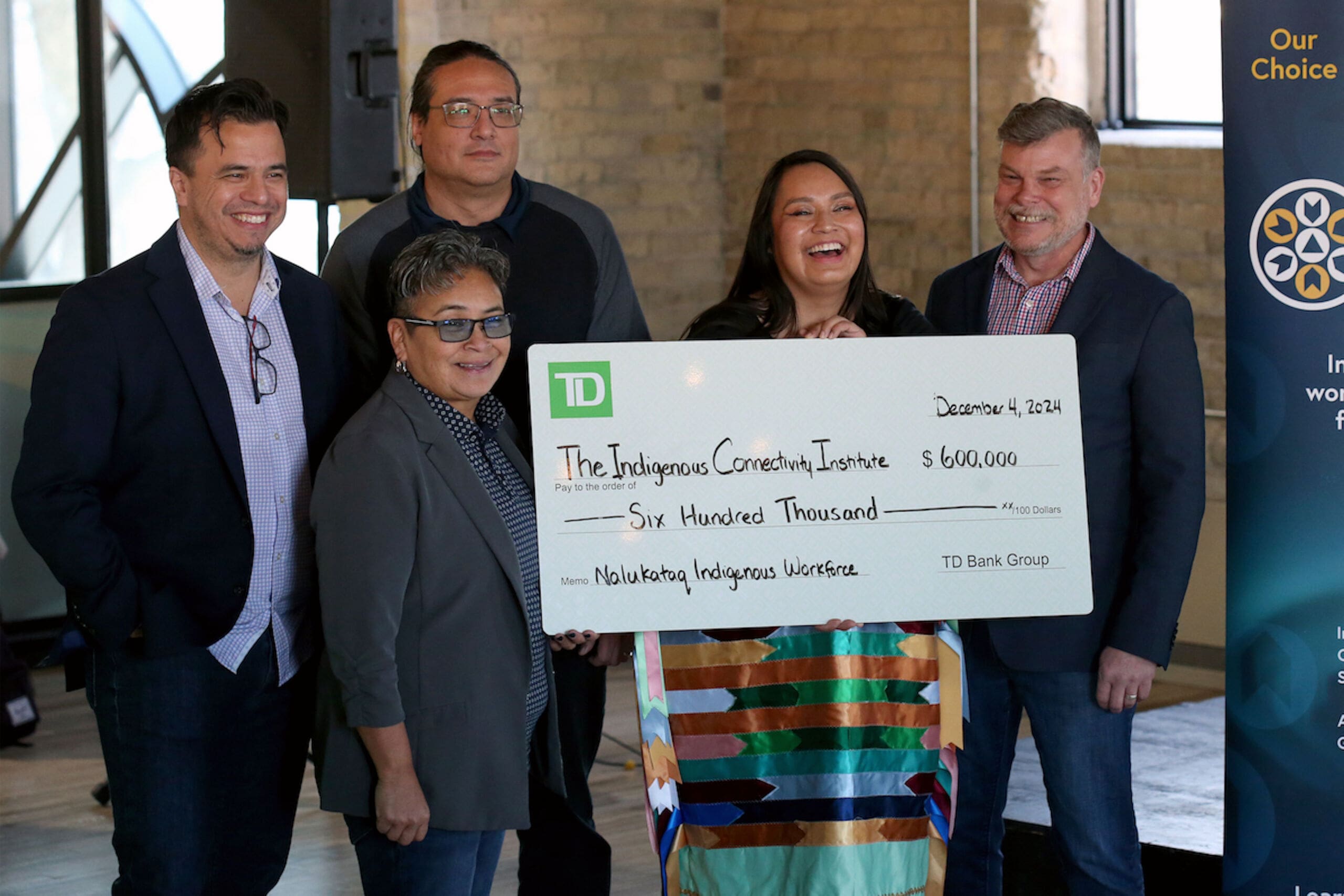Indigenous Connectivity Institute gets funding boost, shifts focus to Canada communities
Why It Matters
Sixty per cent of rural and remote households in Canada have access to broadband at speeds the federal government deems acceptable. That number drops to 43 per cent for First Nations communities, making it more difficult to access resources like healthcare and education.

Phil Steinhauer-Mozejko sees it all the time: people travelling for days from remote First Nations to take part in connectivity workshops so they can improve broadband service in their home communities.
“Last week in Squilax, we had a grandmother who travelled for three days to make it to the workshop. She left on Friday and got there on Monday,” said the Indigenous Connectivity Institute’s director of Indigenous and external relations.
“She was note-taking like crazy at the workshop … to bring this information back to her nation, to the Chief and Council, so they can make informed decisions,” he said.
Connect Humanity, a California-based non-profit dedicated to digital equity, launched the Indigenous Connectivity Institute two years ago. Its operations then transitioned to Clear Sky Connections, an Indigenous non-profit technology company based in Winnipeg.
While still in its early days, the institute is on track to become an independent, self-sustaining organization, said Steinhauer-Mozejko.
This month, the fledgling initiative received a boost from TD Bank, which awarded the institute $600,000.
This funding will help the grassroots start-up grow Nalukataq, a workforce-development initiative for First Nations, Metis, and Inuit communities that want to develop, own, and operate their own broadband.
At an event in Winnipeg marking the occasion, Indigenous connectivity leaders shared how a lack of high-speed internet impacted their community members’ ability to access healthcare, education, remote work, social connections and business opportunities.
Loretta Jeff-Combs of Tl-esqox First Nation in British Columbia said Indigenous communities often pay the same rate to access internet services from large providers as those in other parts of the country but depend on outdated infrastructure and receive slow speeds.
“Typically, it’s only Indigenous people speaking on that because we’re the only ones who have to see that,” said the 25-year-old.
Funding Differences in U.S.
While initially focused on North America as a whole, the institute has now largely pivoted to Indigenous communities in Canada.
The transition from Connect Humanity to Clear Sky Connections has been smooth, according to Mark Buell, a senior advisor to the institute, and former director of Indigenous program development at Connect Humanity.
However, there are notable difference in how money flows in the U.S. and Canada.
“Biden has allocated US$65 billion to connect everyone, but that was geared towards construction projects,” Buell said, adding there isn’t much cash available to prepare communities to run their own networks or build capacity.
“There is a lot more of that in Canada,” he said.
As well as being a registered non-profit in Canada, Clear Sky Connections is also able to receive funds from American philanthropic donors, said Steinhauer-Mozejko.
The Mastercard Foundation, now joined by TD Bank, continues to be a key sponsor of the institute’s activities in Canada.
Despite not actively working with many communities south of the border at the moment, the institute continues to monitor and participate in policy discussions around broadband and connectivity in both countries.
Recently, the institute was involved in encouraging Innovation, Science and Economic Development Canada to consider a priority window for Indigenous applicants looking to access spectrum licences, which makes wireless communications possible.
The federal department has been running a six-month engagement to develop a draft framework around this priority window, which is similar to the Rural Tribal Priority Window in the U.S.
Steinhauer-Mozejko said the institute will now expand its workshops to various communities around Canada, including The Pas in northern Manitoba and communities in northern Quebec.
British Columbia will also be a focus area, particularly harder-to-reach parts of Vancouver Island, Haida Gwaii and Bella Coola.
He added that most First Nations in British Columbia are located on unceded territory, which can be a challenging environment to work in.
“Because we’re not on treaty [land], it’s really difficult, we’re not approached as much,” Jeff-Combs said.
—With files from Shannon VanRaes

